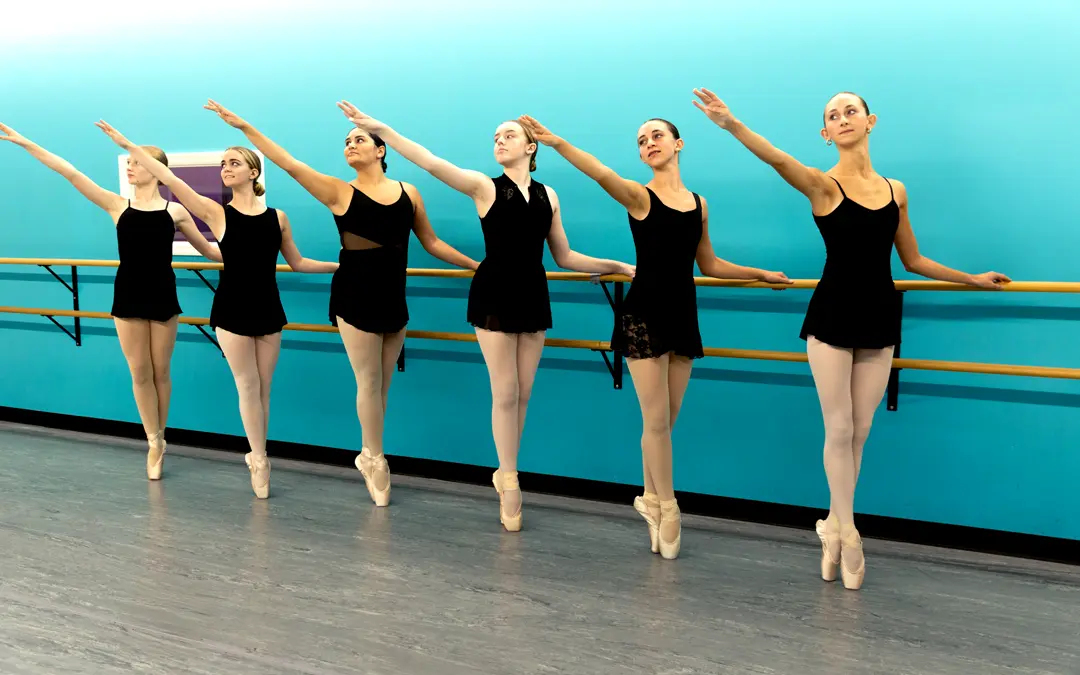Ballet is an art form that demands grace, strength, and exceptional flexibility. At Dance Classics, we understand that developing flexibility is a journey that extends beyond the studio walls. Whether you’re a beginner or advancing in your ballet technique, incorporating targeted stretches into your home routine can significantly enhance your performance and help you achieve those beautiful lines that define ballet.
Standing Hamstring Stretch
This fundamental stretch targets your hamstrings and hip flexors—essential for achieving higher leg extensions. Using a chair or barre, place one foot elevated while keeping both legs straight. Gently lean toward your elevated leg, hinging at the hips while maintaining a straight back. This stretch also benefits your lower back and calves, creating a comprehensive foundation for improved flexibility.
Dynamic Lunges
Lunges are excellent for stretching your hips, hamstrings, and inner thighs. From a standing position with feet hip-width apart, step forward into a 90-degree angle. For added benefit, lower your back knee to the ground and lift your chest skyward. This variation also opens your chest and back. To challenge your balance while stretching, keep your back knee hovering just above the ground.
Quad Stretches for Ballet Lines
Strong, flexible quadriceps are crucial for maintaining proper ballet positions. Try both kneeling and standing variations: in a kneeling position, grab your back foot and pull it toward your glute, or while standing, lift one leg behind you and pull your ankle toward your body. Both stretches improve hip flexor flexibility essential for beautiful arabesques and extensions.
Calf Stretch for Pointed Feet
Flexible calves are vital for achieving those perfectly pointed feet that define ballet technique. Stand with one foot in front of the other, bend your front knee while keeping your back leg straight and heel grounded. This stretch helps prevent injury while improving the quality of your jumps and relevés.
Working Toward Front Splits
Front splits represent the pinnacle of flexibility for many dancers. Begin in a low lunge with your back knee on the ground, then slowly straighten your front leg. Gradually sink deeper into the stretch until you can achieve a full split. Remember, this takes time and consistent practice—be patient with your progress.
In Conclusion
Flexibility in ballet isn’t just about achieving impressive positions; it’s about moving with freedom, grace, and reduced risk of injury. By incorporating these stretches into your routine, you’re investing in your long-term development as a dancer.
At Dance Classics, we’re committed to supporting your ballet journey both in and out of the studio. Our experienced instructors can help you develop proper stretching techniques and guide your flexibility progress safely. Join our ballet classes and discover how dedicated practice and proper stretching can transform your dancing!
Remember: Always warm up before stretching and never force a stretch. Consistency is key to seeing improvement.

